目錄
一 、鏈式
二 、題目
1、兩兩相加
(1)題目
(3) 代碼書寫
?2、兩兩交換鏈表中的節點
(1)題目
(2) 解題思路
(3)代碼書寫?
3、重排鏈表
(1)題目
(2)解題思路
(3)代碼實現
4、合并K個升序鏈表? ?
(1)題目
?(2)解題思路
(3)代碼解答
5、K個一組反轉鏈表?
(1)題目
?(2)解題思路
(3)代碼實現
一 、鏈式
利用鏈表來解決問題
二 、題目
1、兩兩相加
(1)題目
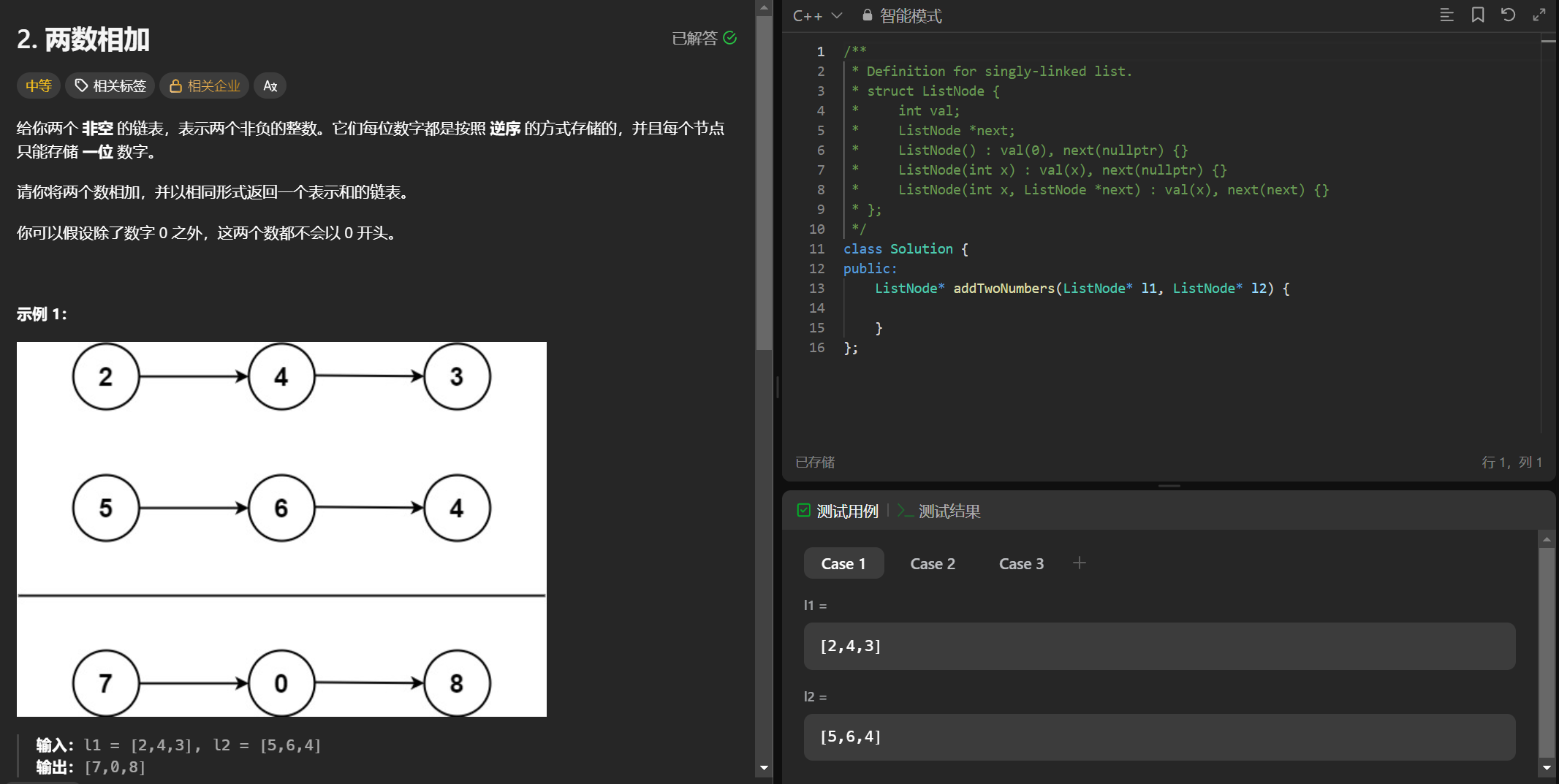
(3) 代碼書寫
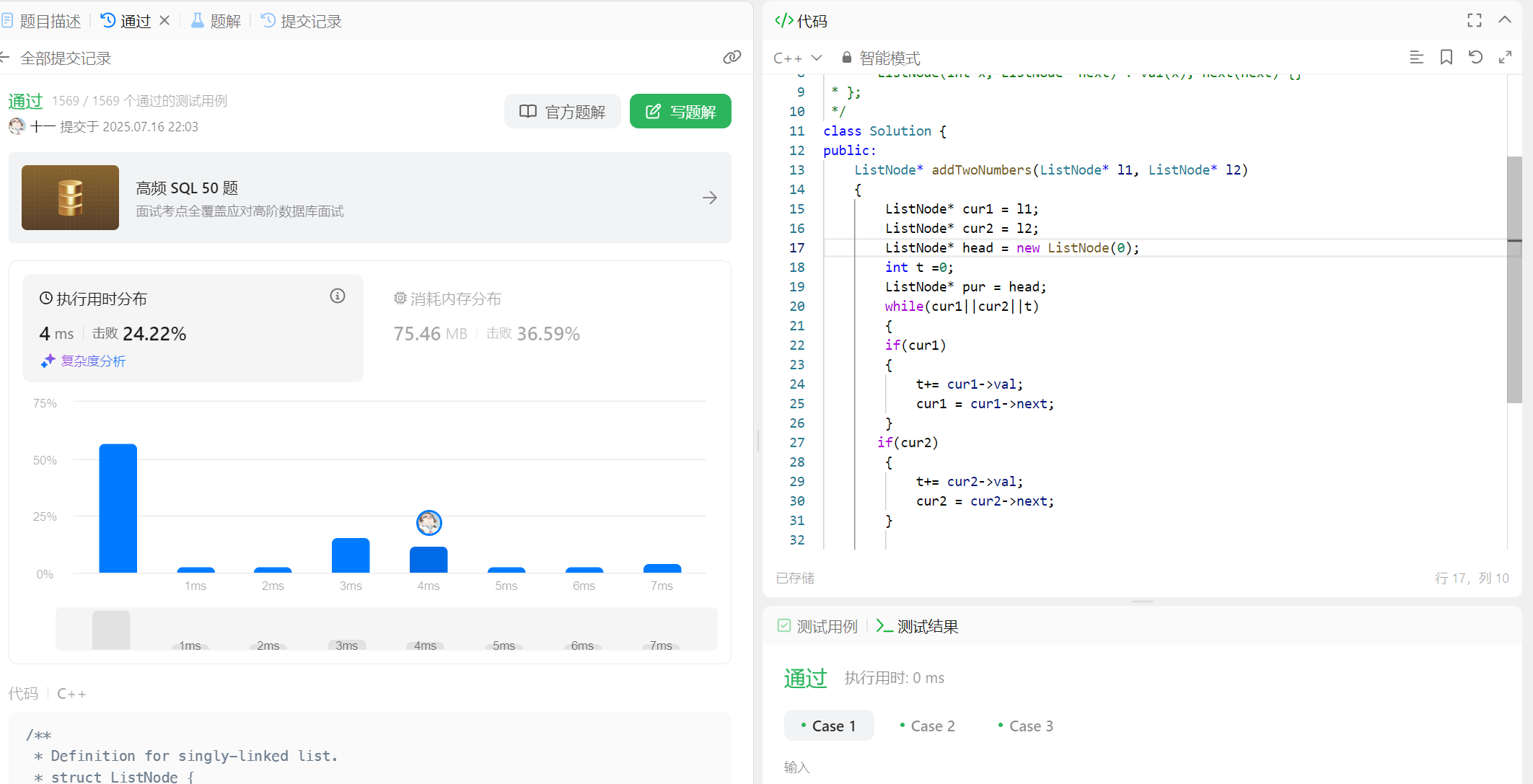
/*** Definition for singly-linked list.* struct ListNode {* int val;* ListNode *next;* ListNode() : val(0), next(nullptr) {}* ListNode(int x) : val(x), next(nullptr) {}* ListNode(int x, ListNode *next) : val(x), next(next) {}* };*/
class Solution {
public:ListNode* addTwoNumbers(ListNode* l1, ListNode* l2){ListNode* cur1 = l1;ListNode* cur2 = l2;ListNode* head = new ListNode(0);int t =0; ListNode* pur = head;while(cur1||cur2||t){if(cur1){t+= cur1->val;cur1 = cur1->next;}if(cur2){t+= cur2->val;cur2 = cur2->next;}pur->next = new ListNode(t%10);pur = pur -> next;t/=10;}ListNode* pcur = head -> next;delete head;return pcur;}};?2、兩兩交換鏈表中的節點
(1)題目
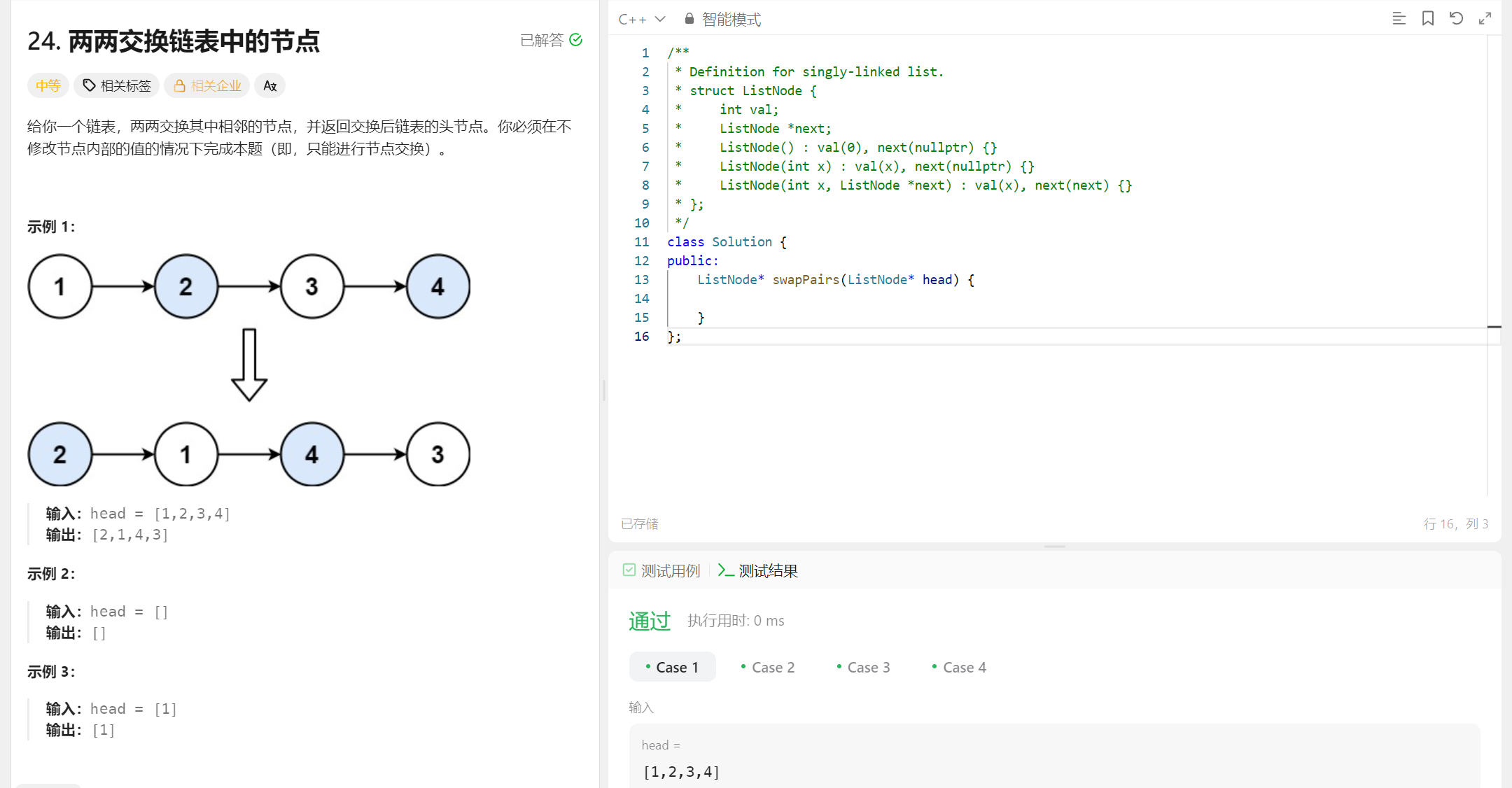
(2) 解題思路
我們也可通過定義四個指針,改變她們的next值來交換結點
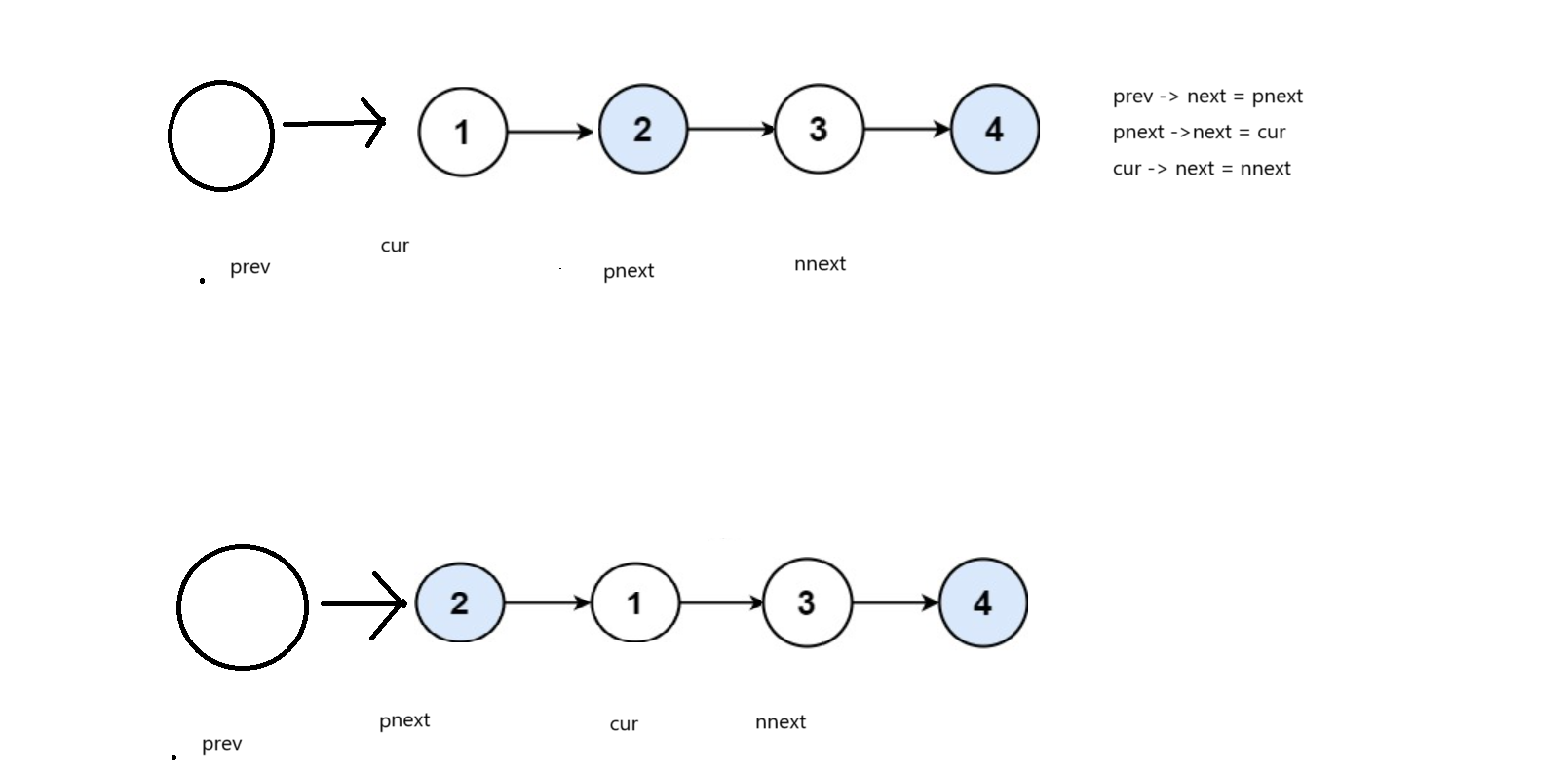
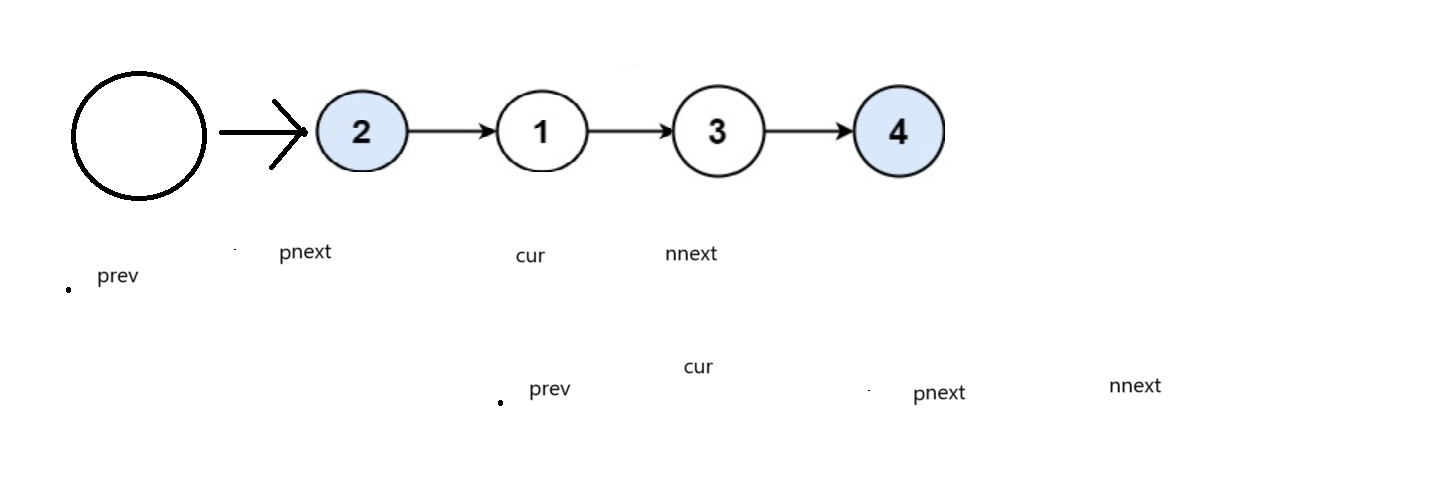
邊界值為

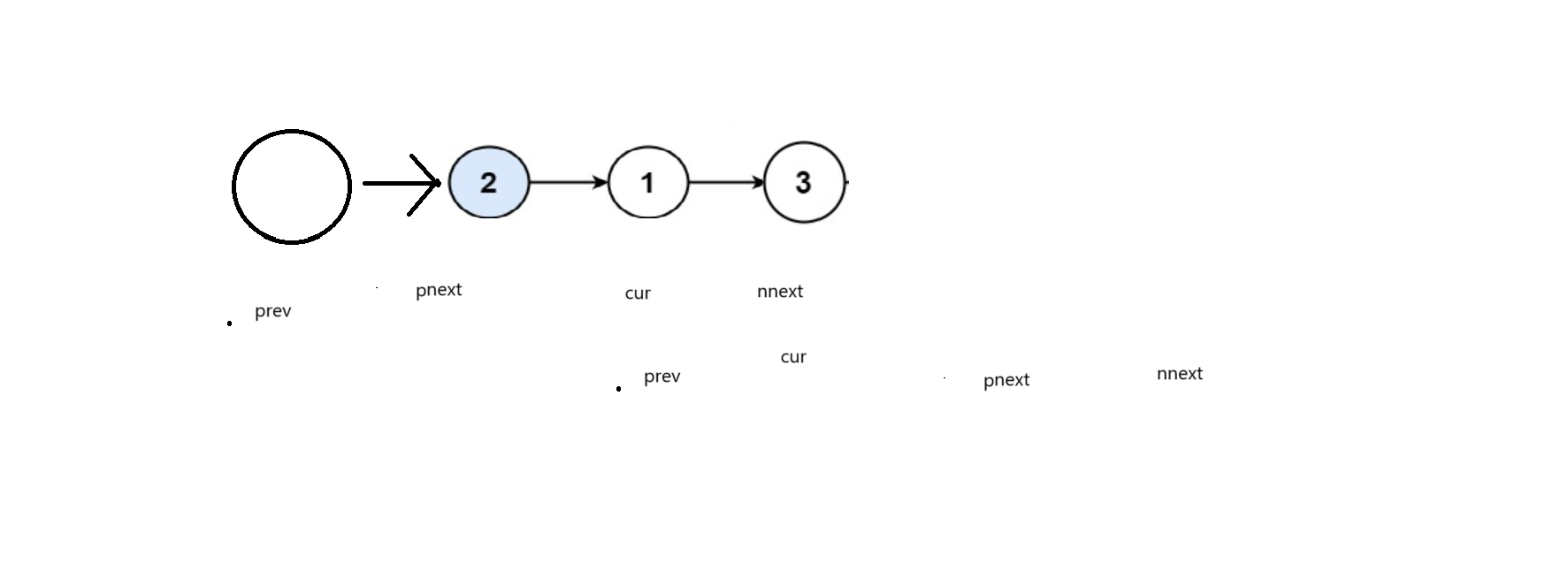
(3)代碼書寫?
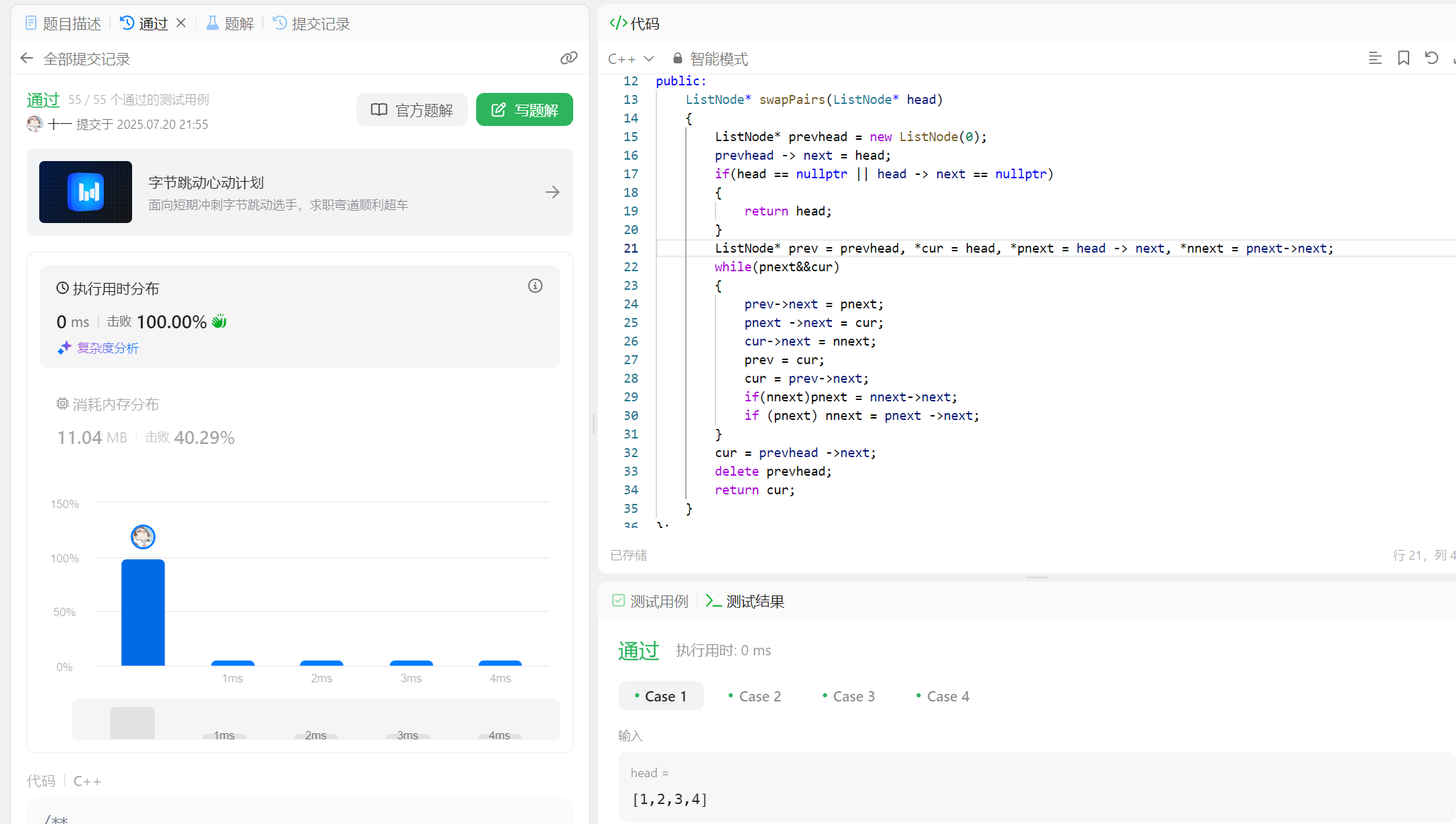
/*** Definition for singly-linked list.* struct ListNode {* int val;* ListNode *next;* ListNode() : val(0), next(nullptr) {}* ListNode(int x) : val(x), next(nullptr) {}* ListNode(int x, ListNode *next) : val(x), next(next) {}* };*/
class Solution {
public:ListNode* swapPairs(ListNode* head){ListNode* prevhead = new ListNode(0);prevhead -> next = head;if(head == nullptr || head -> next == nullptr){return head;}ListNode* prev = prevhead, *cur = head, *pnext = head -> next, *nnext = pnext->next;while(pnext&&cur){prev->next = pnext;pnext ->next = cur;cur->next = nnext;prev = cur;cur = prev->next;if(nnext)pnext = nnext->next;if (pnext) nnext = pnext ->next;}cur = prevhead ->next;delete prevhead;return cur;}
};3、重排鏈表
(1)題目
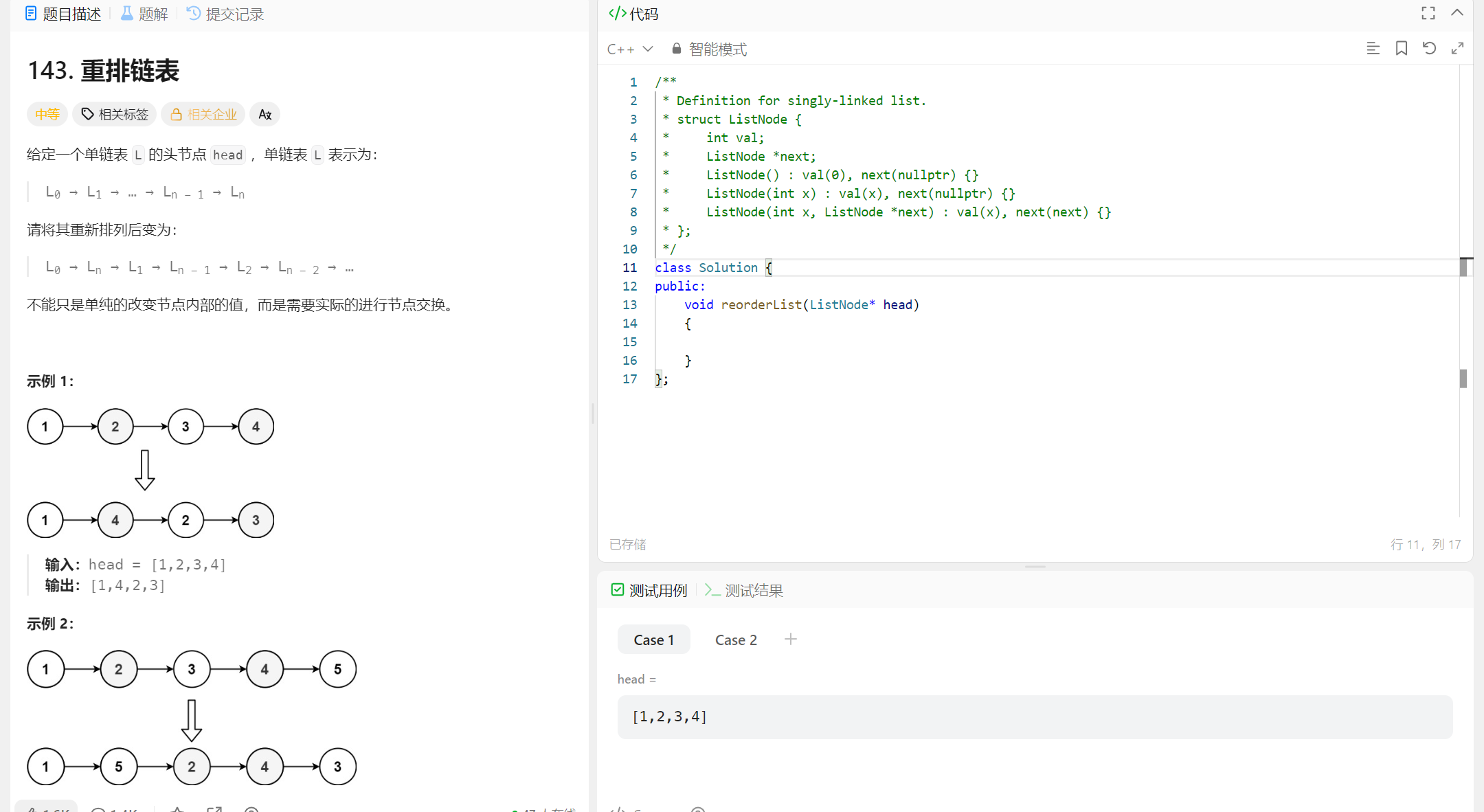
(2)解題思路
1、找到鏈表的中間
? ? ? 快慢指針

2、逆序后半段的指針(斷開兩端的指針)
? ? ? ?雙指針

3、將兩端指針鏈接
? ? ? 雙指針
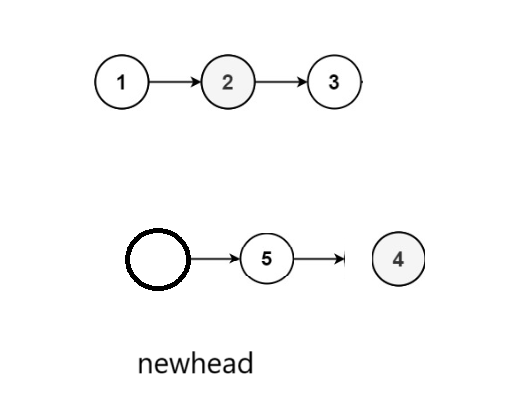
(3)代碼實現
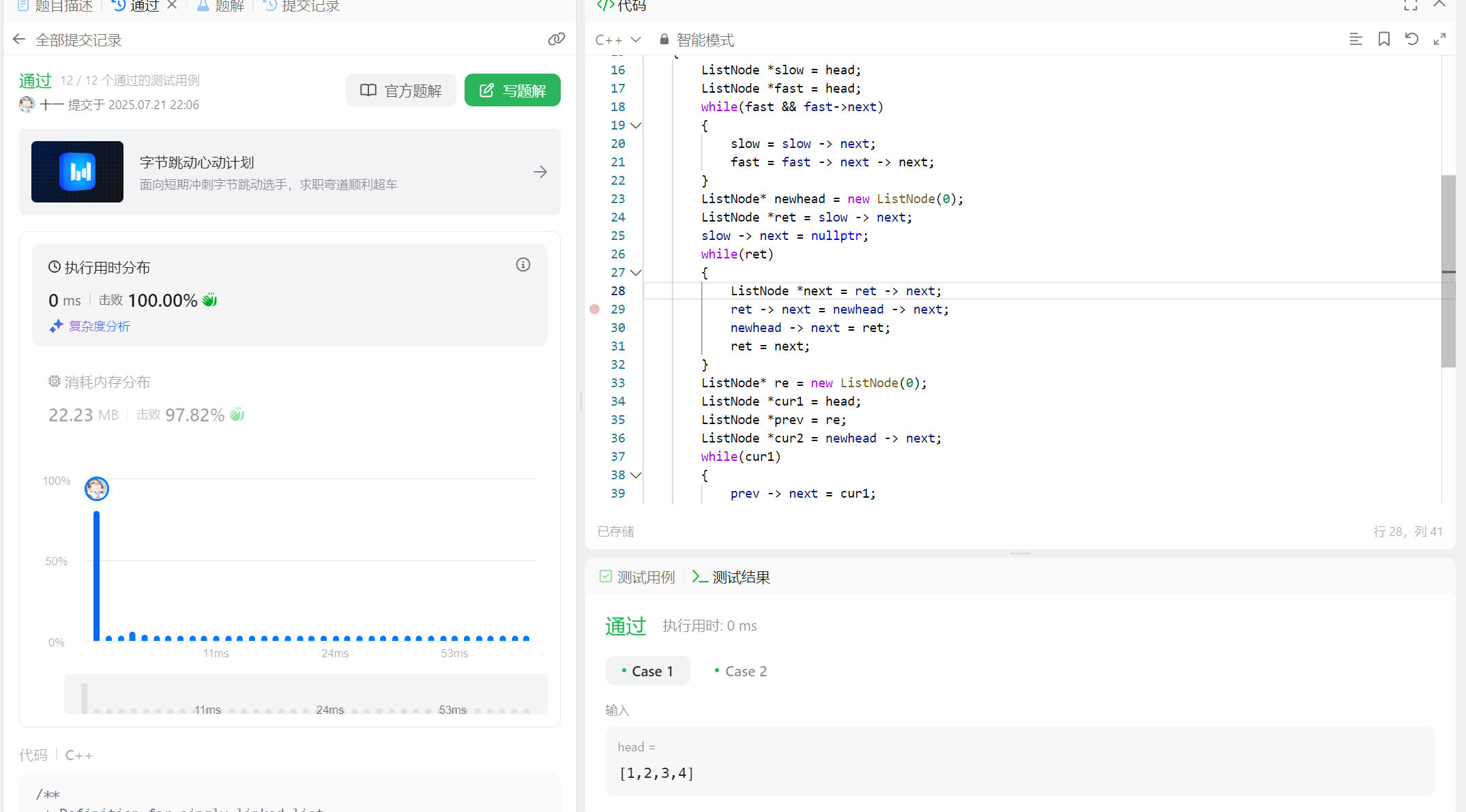
/*** Definition for singly-linked list.* struct ListNode {* int val;* ListNode *next;* ListNode() : val(0), next(nullptr) {}* ListNode(int x) : val(x), next(nullptr) {}* ListNode(int x, ListNode *next) : val(x), next(next) {}* };*/
class Solution{
public:void reorderList(ListNode* head) {ListNode *slow = head;ListNode *fast = head;while(fast && fast->next){slow = slow -> next;fast = fast -> next -> next;}ListNode* newhead = new ListNode(0);ListNode *ret = slow -> next;slow -> next = nullptr; while(ret){ListNode *next = ret -> next;ret -> next = newhead -> next;newhead -> next = ret;ret = next; }ListNode* re = new ListNode(0);ListNode *cur1 = head;ListNode *prev = re;ListNode *cur2 = newhead -> next;while(cur1){prev -> next = cur1;prev = prev -> next;cur1 = cur1 -> next;if(cur2){prev->next = cur2;prev = prev -> next;cur2 = cur2 -> next;}}delete newhead;delete re;}
};4、合并K個升序鏈表? ?
(1)題目
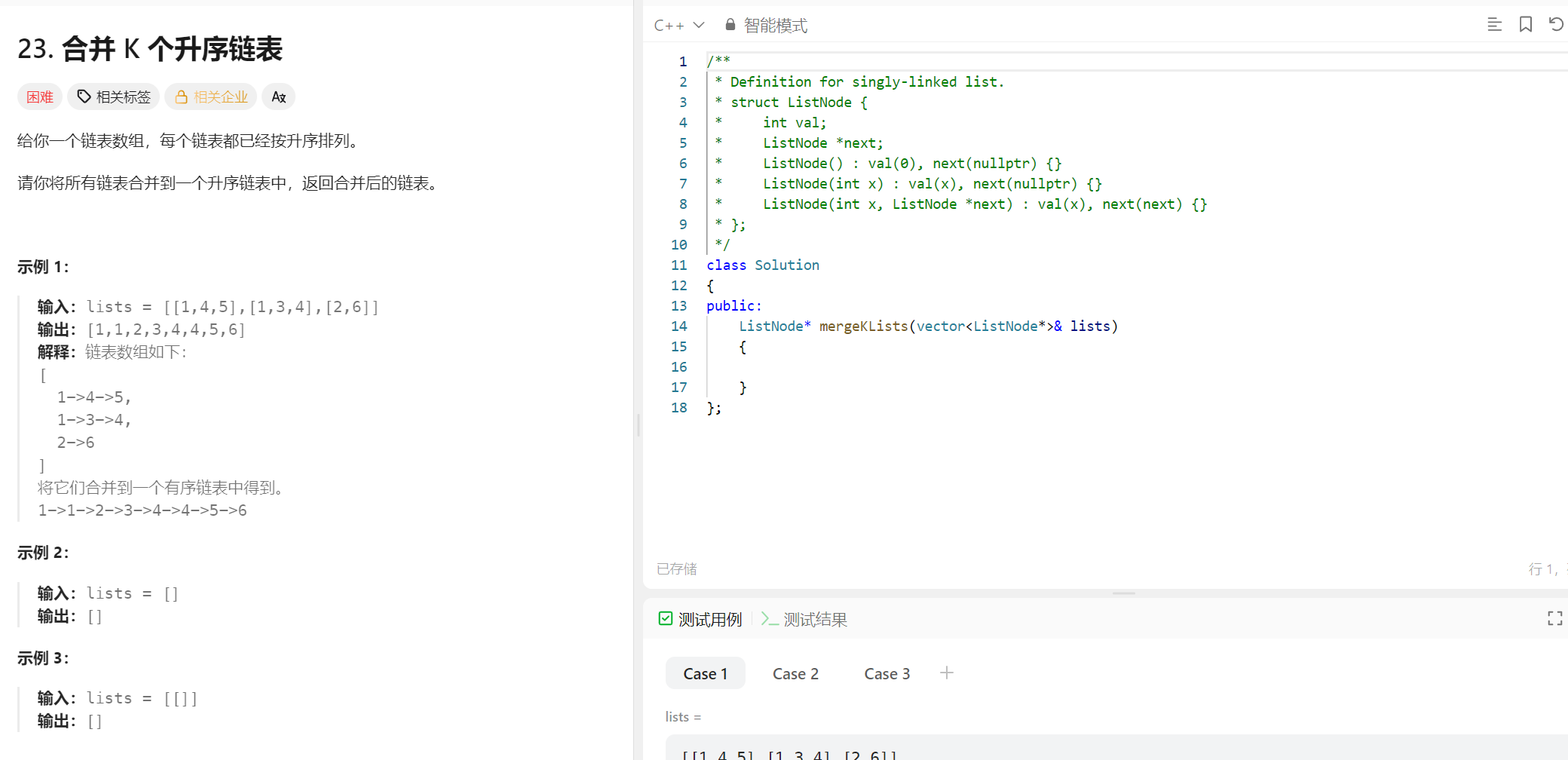
?(2)解題思路
解題思路一:我們可以設一個優先級隊列,將各個鏈表頭入列,在創建一個鏈表最小鏈入鏈表中
在讓它的頭出對列
解法思路二:歸并我們可以通過歸并將鏈表分為兩個,在將兩個鏈表進行排序
(3)代碼解答
思路一代碼:
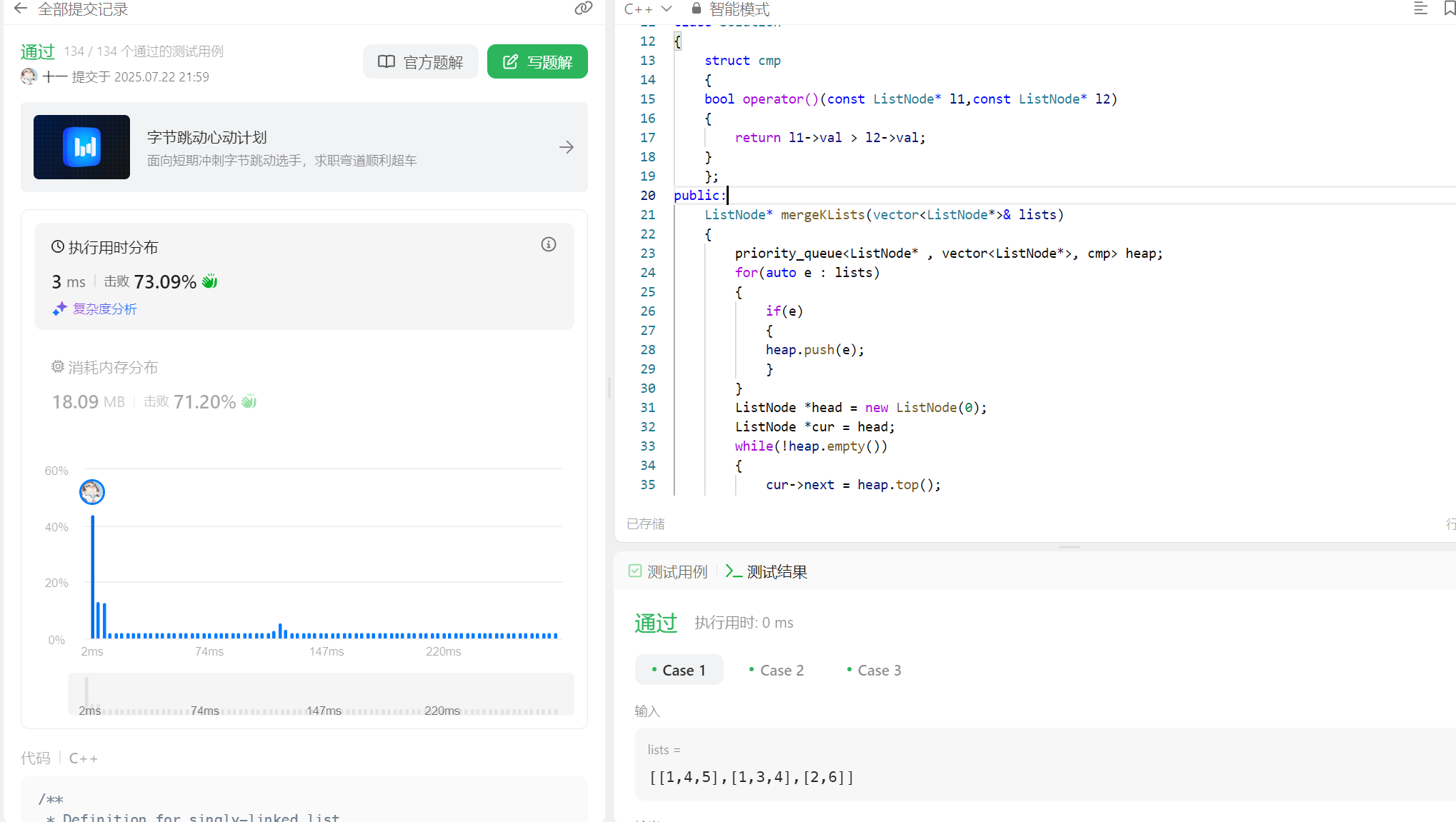
/*** Definition for singly-linked list.* struct ListNode {* int val;* ListNode *next;* ListNode() : val(0), next(nullptr) {}* ListNode(int x) : val(x), next(nullptr) {}* ListNode(int x, ListNode *next) : val(x), next(next) {}* };*/
class Solution
{struct cmp{bool operator()(const ListNode* l1,const ListNode* l2){return l1->val > l2->val;}};
public:ListNode* mergeKLists(vector<ListNode*>& lists) {priority_queue<ListNode* , vector<ListNode*>, cmp> heap;for(auto e : lists){if(e){heap.push(e);}}ListNode *head = new ListNode(0);ListNode *cur = head;while(!heap.empty()){cur->next = heap.top();cur = cur -> next;heap.pop();if(cur->next)heap.push(cur->next);}cur= head->next;delete head;return cur;}
};?思路二解答:
?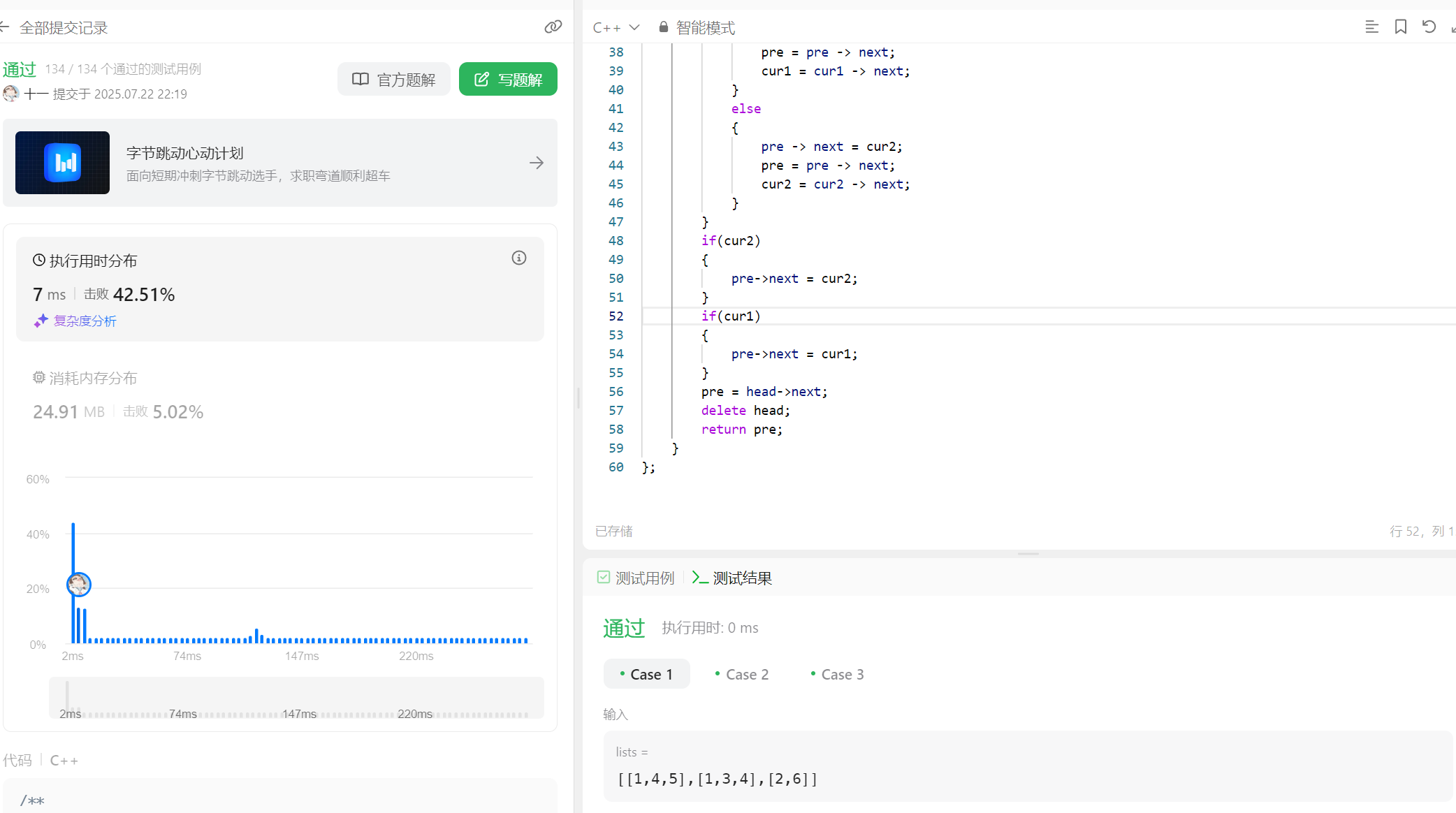
5、K個一組反轉鏈表?
(1)題目
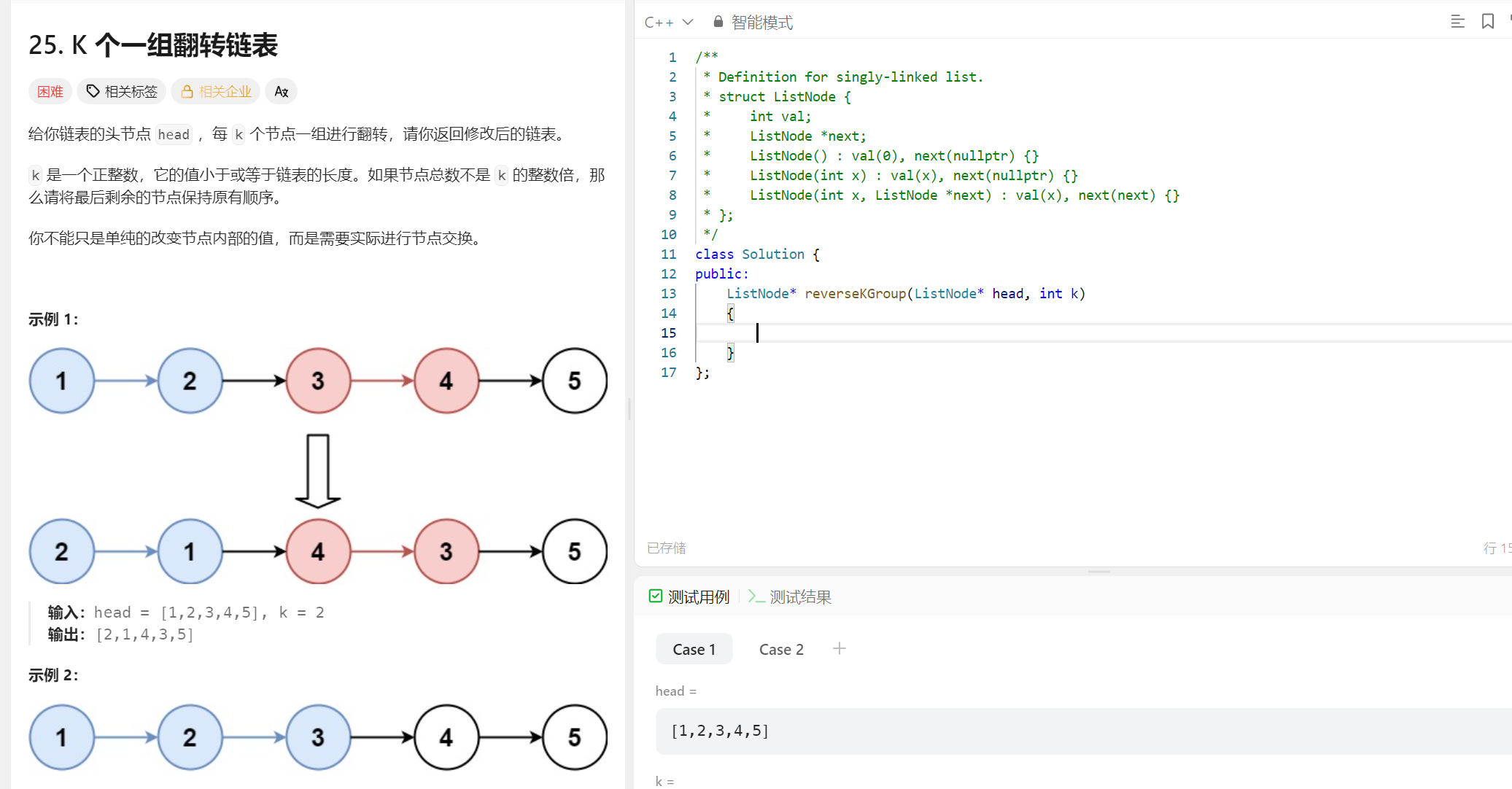
?(2)解題思路
解題思路一:我們可以首先算出來有我們需要反轉幾次,然后我們就可以將他看作為幾個逆置
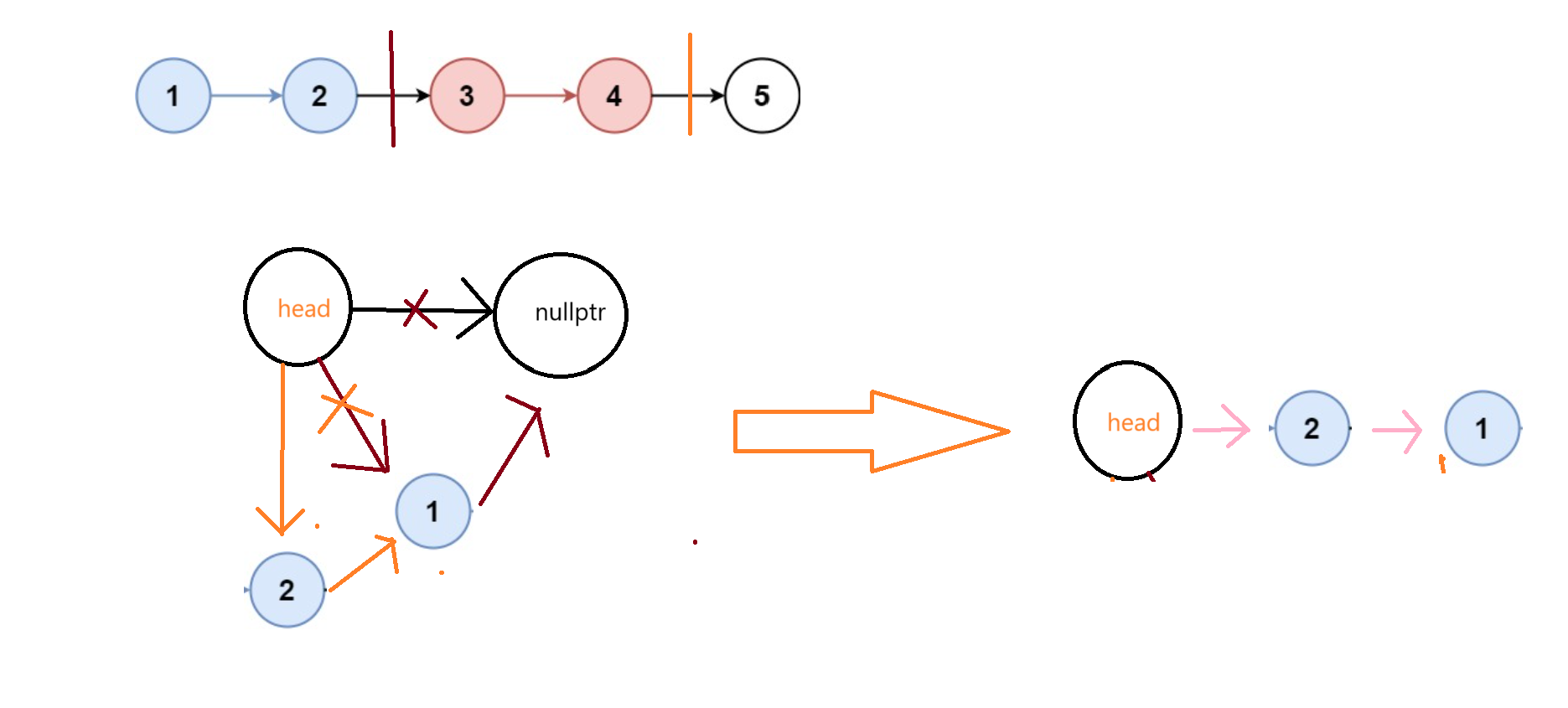
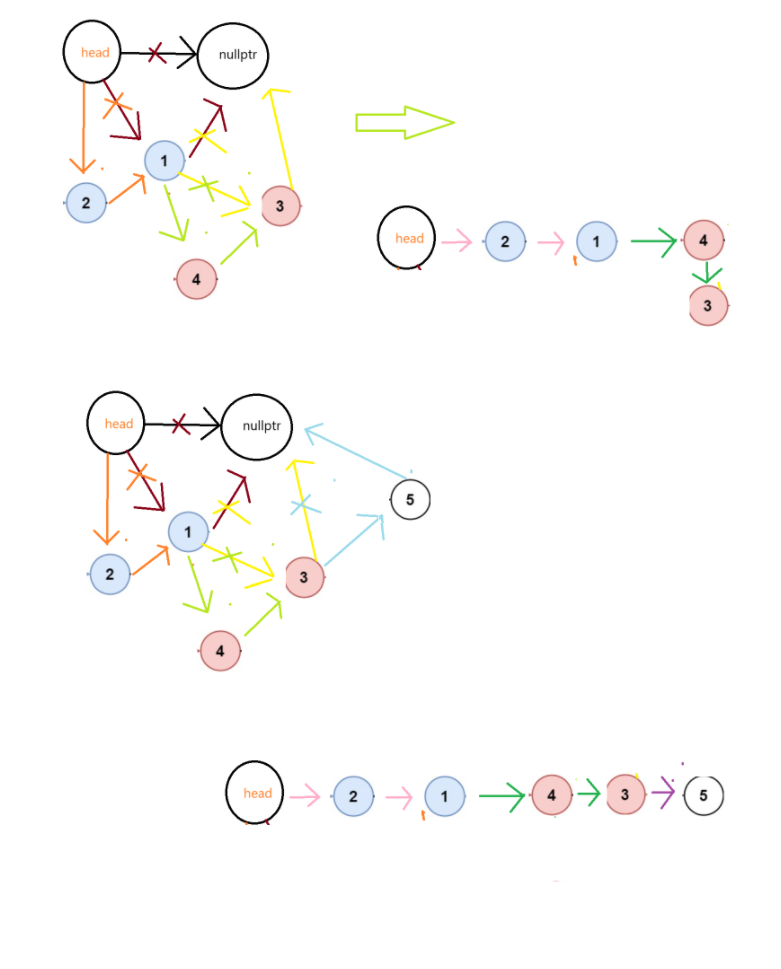
(3)代碼實現
/*** Definition for singly-linked list.* struct ListNode {* int val;* ListNode *next;* ListNode() : val(0), next(nullptr) {}* ListNode(int x) : val(x), next(nullptr) {}* ListNode(int x, ListNode *next) : val(x), next(next) {}* };*/
class Solution
{
public:ListNode* reverseKGroup(ListNode* head, int k) {int n = 0;ListNode *cur = head;while(cur){cur= cur->next;n++;}n/=k;ListNode* newhead = new ListNode(0);ListNode *prev = newhead;cur = head;for(int j = 0; j < n; j++){ListNode* tmp = cur;for(int i = 0; i < k ;i++){ListNode *next = cur->next;cur -> next = prev -> next;prev -> next = cur;cur = next;}prev = tmp;}prev ->next = cur;cur = newhead -> next;delete newhead;return cur;}
};




)





)
)


![親測可用 [安卓]《神秘來電》V1.1無需登入無廣告離線打開即用手機模擬發起虛假來電免費版](http://pic.xiahunao.cn/親測可用 [安卓]《神秘來電》V1.1無需登入無廣告離線打開即用手機模擬發起虛假來電免費版)

)

